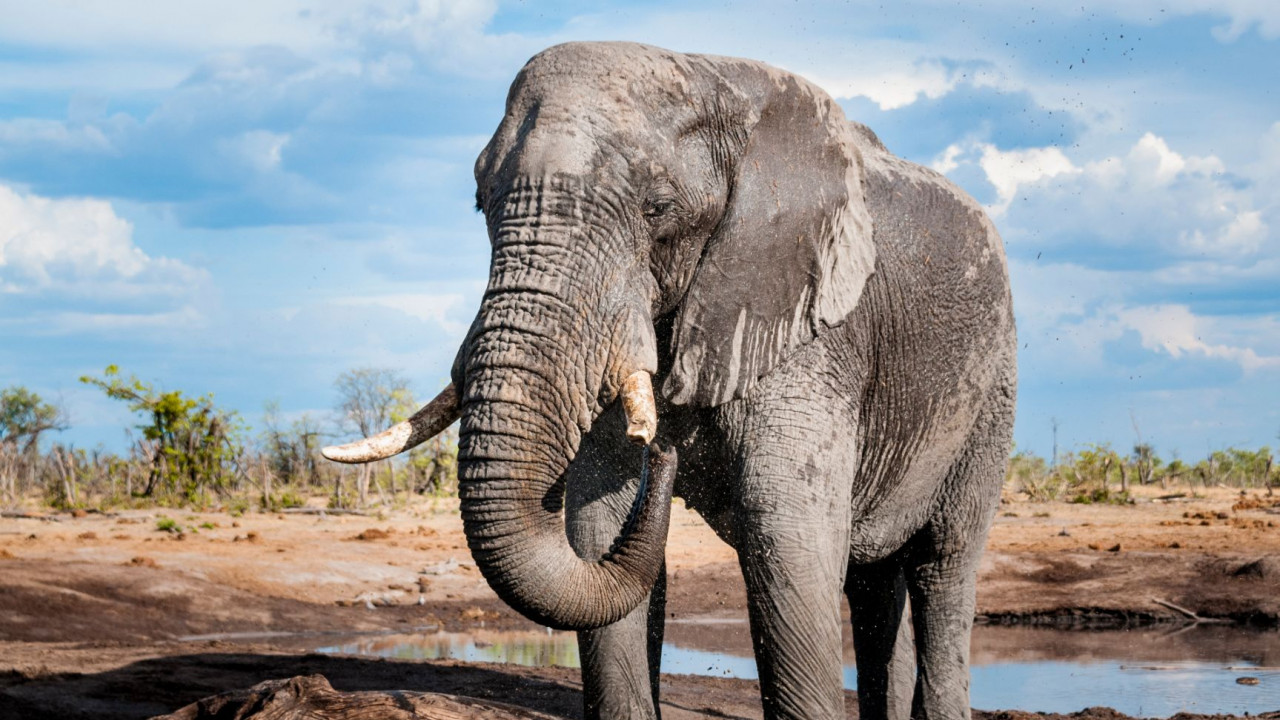
With their socially aware nature, loyalty & strong friendships, life-long memories, developmental stages of life, and mourning of their dead, the lovable elephant is often thought of having a life that parallels those of humans.
Being the largest animal to walk our planet, the elephant hold many of the records for heaviest, largest, longest etc. There are however several other quite surprising facts that may astound you.
Read on to find out more about this incredible animal:
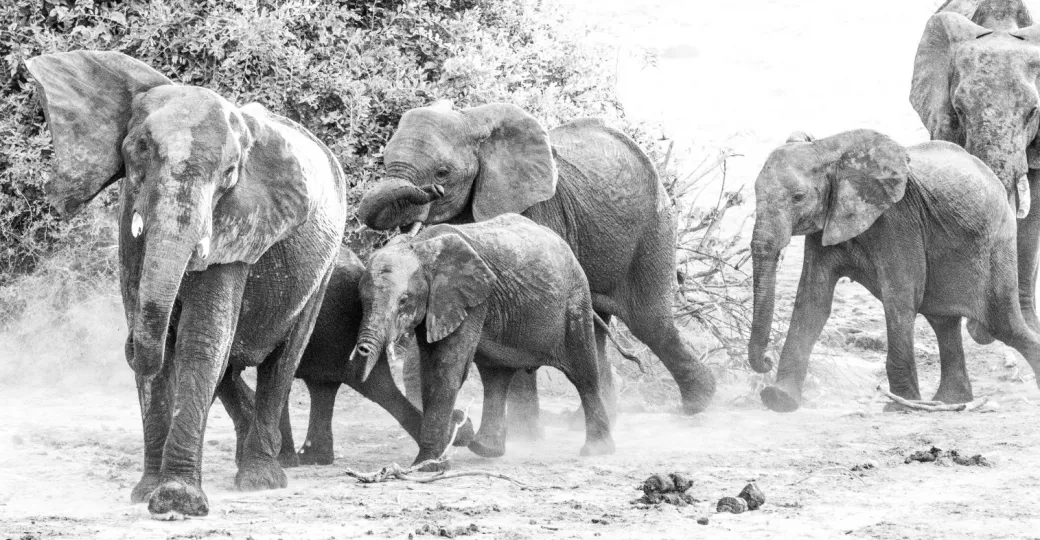
Elephants in Chobe, Botswana - Toby Pheasant
There are three species of elephant that are currently recognised: the African bush elephant, the African forest elephant, and the Asian elephant. African elephants are typically slightly larger than their Asian cousins, and have proportionally larger ears (some say that African elephants have an ear that looks a bit like the African continent). African elephants have two ‘fingers’ at the tip of their trunks, whereas Asian elephants have just one.
Also known as "ecosystem engineers," elephants shape their habitat in many ways. During the dry season, they use their tusks to dig up dry riverbeds and create watering holes many animals can drink from. Their dung is full of seeds, helping plants spread across the environment - and it keeps the dung beetles happy too! In the forest, their feasting on trees and shrubs creates pathways for smaller animals to move through, and in the savanna, they use their incredible strength to uproot trees and eat saplings, which helps keep the landscape open for zebras and other plains animals to thrive.
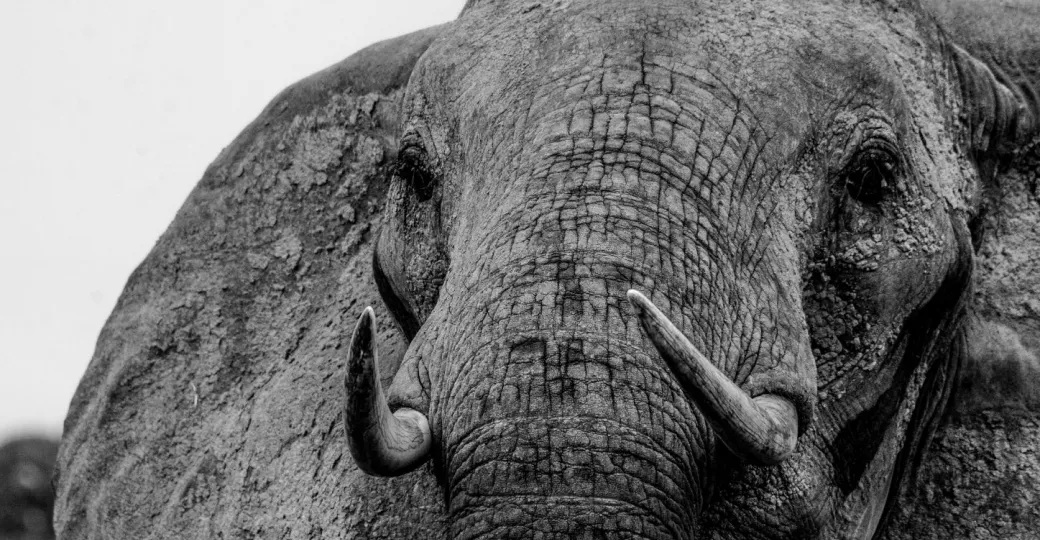
African Elephant in the Ruaha National Park - Toby Pheasant
Weighing up to around 6 - 7 tonnes, elephants can live for up to 60 to 70 years and, despite being around 120kg (19 stones!) at birth, they will only reach their full size at around 35 years old. Amazingly, elephant calves are able to stand within 20 minutes of being born and can walk within 1 hour. After two days, they can keep up with the herd. This incredible survival technique means that herds of elephants can keep migrating to find food and water to thrive. Having a baby elephant is a serious commitment. Elephants have a longer pregnancy than any other mammal - almost 22 months.
Weighing up to 5kg, the African elephant has the largest brain of any land animal. The elephant's temporal lobe (the area of the brain associated with memory) is larger and denser than that of people - hence the saying 'elephants never forget'.
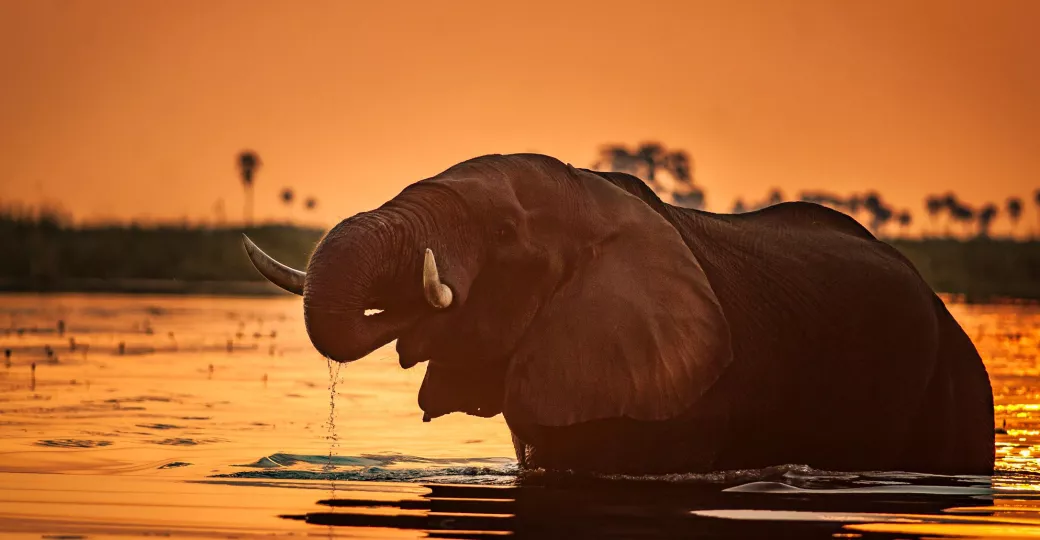
Elephant at Sunset - Toby Pheasant
Elephants are matriarchal, meaning they live in female-led groups. The matriarch is usually the biggest and oldest. She presides over a multi-generational herd that includes other females, called cows, and their young.
An elephant's trunk is an absolute marvel of nature. With over 40,000 muscles (to put that into perspective, we have roughly 600 in our entire body), they can swing and manoeuvre this 5th 'limb' into any direction and is essential to their survival. We've written a separate blog about this incredible appendage here! Did you know that it can take up to 6 months for a baby elephant to 'learn' how to master their trunk - you'll often see calves kneeling down to drink from a waterhole!
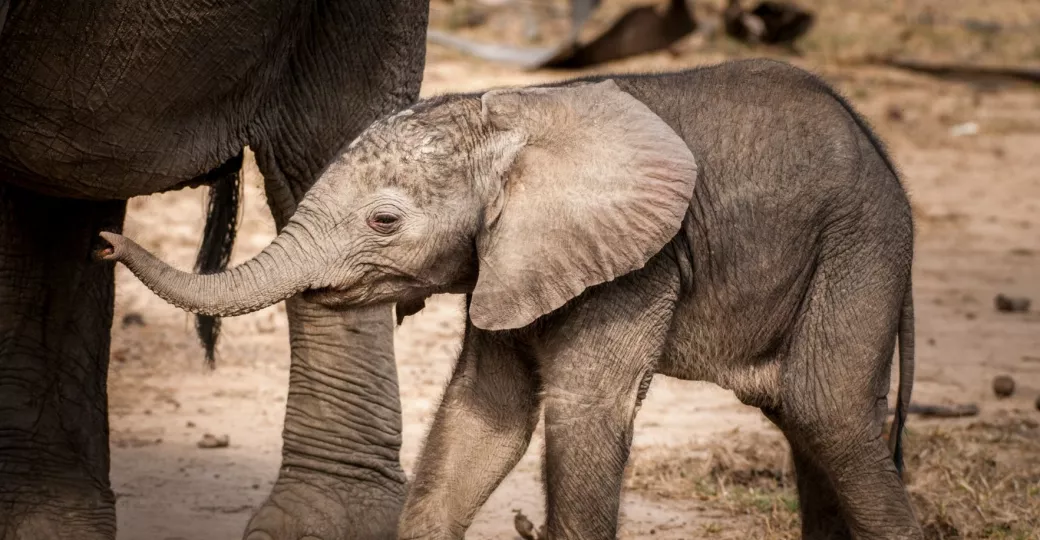
Elephant mother and calf, Lower Zambezi National Park - Toby Pheasant
An elephant’s skin is 2.5cm thick in most places. The folds and wrinkles in their skin can retain up to 10 times more water than flat skin does, which helps to cool them down. They keep their skin clean and protect themselves from sunburn by taking regular dust and mud baths.
Like their trunk, an elephant's tusk is an incredibly useful tool that they are dependent on for digging and foraging. You can tell whether an elephant is left or right-tusked by seeing which of its two tusks is more worn down! Their tusks are in fact extremely elongated incisors. On the topic of teeth, elephants are 'polyphyodonts' meaning that they have cycles of teeth rotating throughout their lives. New teeth grow in at the back of the mouth and move forward to push out the old ones. They have 6 sets of teeth in their life, after which they sadly can no longer sufficiently process food and typically die of starvation.
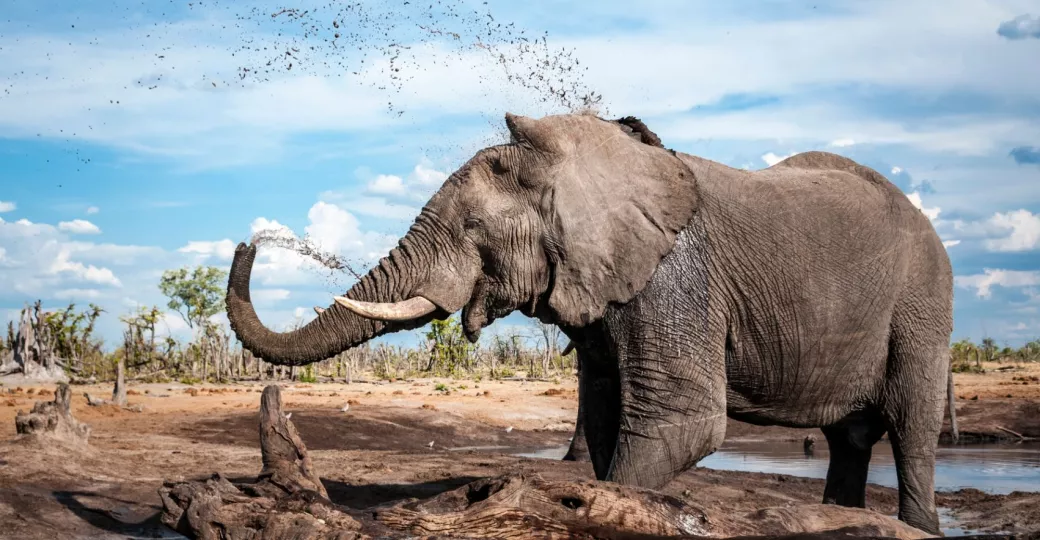
Elephant enjoying a waterhole in Botswana - Toby Pheasant
Despite their size, elephants are surprisingly quick on their feet and can reach speeds of 40kmph. As you can probably imagine, they don't quite have the stamina to keep this up for very long. Did you also know that elephants don't have the bone structure to jump (not that they would ever need to!)
Elephants need up to 150kg of food per day, although half of this may leave the body undigested. They eat so much that they can spend up to three-quarters of their day eating. Elephants eat roots, grasses, fruit, and bark
Elephants communicate in a variety of ways - including sounds like trumpet calls (some sounds are too low for people to hear), body language, touch and scent. They can also communicate through seismic signals - sounds that create vibrations in the ground - which they may detect through their bones.
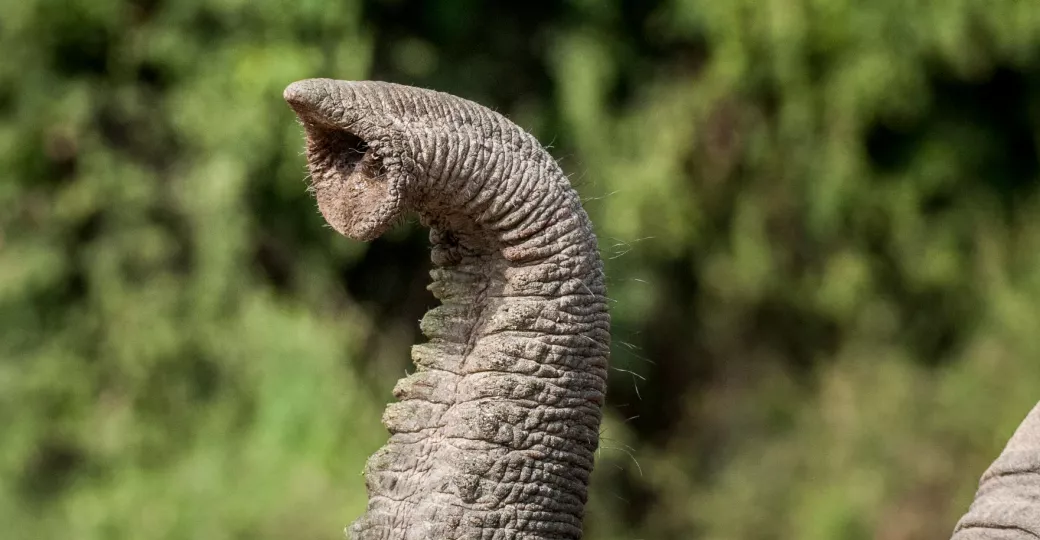
Elephant's trunk, Lower Zambezi National Park - Toby Pheasant
Finally, elephants have very few sweat glands. The few sweat glands that an elephant has are located on the foot, near the cuticles. If you look at an elephant on a hot day, you may see a wet area around the top of their toenails.
Incredible facts, we are sure you'll agree. If you are yearning for more incredible animal facts, head on over to our similar page on The Hippo or The Ostrich!

James Handley
Born and bred in the South of England, James is Bonamy’s intrepid traveller. When not honing his skills in London over the last decade, he's spent much of his time on self-planned expeditions and a...
View profileNever miss a notebook entry with our newsletter


